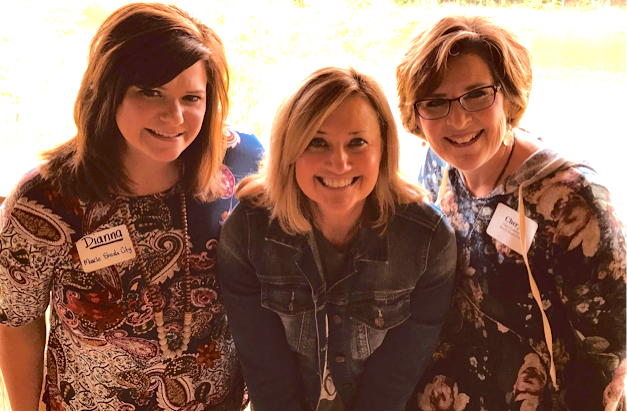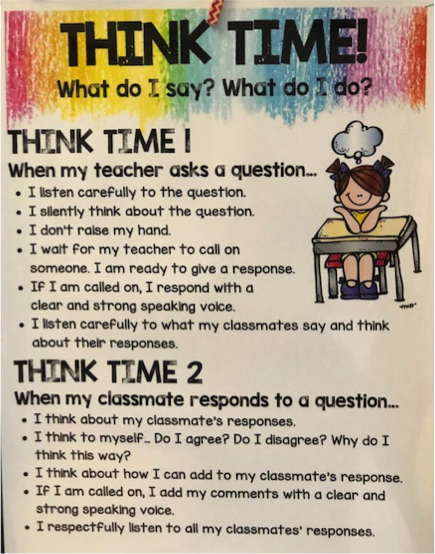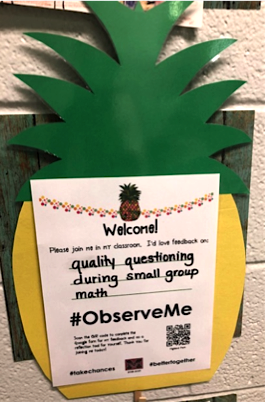Engaging students in deep and meaningful learning is critical to their success in today’s constantly changing world. One way to make connections with students is by asking quality questions—the kinds of questions that capture their attention and cause them to really think and “go deep.”
One of the leading experts on questioning is our own Jackie Walsh who (with co-author Beth Sattes) has written several books on questioning, the most recent being Quality Questioning: Research-Based Practice to Engage Every Learner.
To ensure that more Alabama teachers gain access to professional learning about quality questioning, the Alabama Best Practices Center has (so far) featured five institutes across the state on the topic, all led by Dr. Walsh.
 One of our most recent institutes was in Muscle Shoals City Schools this past June. Three of their Instructional Partners—all of whom work with elementary teachers—have captured the results of their schools’ involvement in the Quality Questioning Institute and the extra impact teachers can have when they use advanced questioning strategies with their students. Over the next three days, we’ll feature reports from (left to right) IP’s Dianna Ritter, Sandy Armstrong, and Cheryl Lockhart.
One of our most recent institutes was in Muscle Shoals City Schools this past June. Three of their Instructional Partners—all of whom work with elementary teachers—have captured the results of their schools’ involvement in the Quality Questioning Institute and the extra impact teachers can have when they use advanced questioning strategies with their students. Over the next three days, we’ll feature reports from (left to right) IP’s Dianna Ritter, Sandy Armstrong, and Cheryl Lockhart.
If you’d like to learn more about future institutes, please contact Emily Strickland at [email protected]. — Cathy Gassenheimer
By Dianna Ritter
Instructional Partner
Highland Park and Webster Elementary
I am fortunate to be the Instructional Partner for both Highland Park and Webster Elementary schools in Muscle Shoals, Both our schools serve first and second grade students.
Our teachers first became involved in Quality Questioning (QQ) last year when we took part in the first summer training experience in June 2017. Some of our participating teachers began using QQ immediately in August of 2017. It wasn’t long before word began spreading throughout Webster and Highland Park about the incredible transformations that were taking place in their classrooms.
Teachers were soon (overwhelmingly) requesting to observe these “early adopters” and their students in action. (You can read more about these initial beginnings in my February 2018 post here at the ABPC blog: How Quality Questioning is Transforming Our Classrooms.) The need for more training was evident!
 We all know something has a higher chance of being successful when it’s a best practice that’s reported to transform classrooms. The likelihood for success goes even higher when teachers begin requesting training and want to see the strategy become part of embedded professional development. When this happened in our schools, we responded by making it possible for almost 100% of our classroom and support teachers to attend ABPC’s second summer training with Jackie Walsh this past June.
We all know something has a higher chance of being successful when it’s a best practice that’s reported to transform classrooms. The likelihood for success goes even higher when teachers begin requesting training and want to see the strategy become part of embedded professional development. When this happened in our schools, we responded by making it possible for almost 100% of our classroom and support teachers to attend ABPC’s second summer training with Jackie Walsh this past June.
At the end of the two-day training we sat down and decided on common procedures, language, and expectations we would use across our schools to insure some consistency throughout our buildings. Some of these included the use of paddles with response stems to help guide class discussions and Think Time 1 and 2 posters for reference in all classrooms. Teachers are also implementing a no hand-raising policy to respond to questions.
Our hope was that the strategies would help our intervention, enrichment, special education, and other teachers be able to better utilize QQ in their classrooms as well.
 As the school year has unfolded, we’ve realized that we need to come back together on this, as the support teachers are noticing it’s still a little hard for them to determine which routines and procedures students are familiar with – depending on what may have been put into place in their individual classrooms.
As the school year has unfolded, we’ve realized that we need to come back together on this, as the support teachers are noticing it’s still a little hard for them to determine which routines and procedures students are familiar with – depending on what may have been put into place in their individual classrooms.
While it is not a huge issue, it is one that I have to think through carefully when trying to support and follow-up with all the teachers in my buildings.
Sharing in Our Online Community Space
Another way we are following up with our training is through the Canvas learning platform we share with all the participants in ABPC’s QQ training. I have found that it can be a very powerful tool for teacher learning and for helping me glean ideas from the work others are doing that I can share with our faculty.
I have realized that teachers have done some incredible work at the beginning of the year to start QQ in their classrooms. (If you click here, you can read a description of some of the activities, ideas, and first steps they have discussed on Canvas in response to questions posed by Jackie Walsh. I didn’t include Jackie’s replies, but she definitely responded!)
Every teacher who attended training from our two schools was asked to respond to Jackie’s questions. What I wanted to happen from that has started to develop: teachers are reading each other’s responses and are learning from each other. They are going to the teacher down the hall and asking her more about how she is using QQ in her classroom. They are stopping me and asking for help in implementing a procedure, routine, or technique that another teacher is using. They are wanting to learn and do more. This has led to them to want to observe QQ in action in each other’s rooms even more.
 We recently completed another one of our regularly scheduled “Observe Me” days and QQ was offered as option. More than 20 times someone in our buildings (teachers, principals, and interns) observed one or more lessons where QQ was being utilized. In fact, there were times when some rooms had ten people observing at once!
We recently completed another one of our regularly scheduled “Observe Me” days and QQ was offered as option. More than 20 times someone in our buildings (teachers, principals, and interns) observed one or more lessons where QQ was being utilized. In fact, there were times when some rooms had ten people observing at once!
The ability for teachers to get into each other’s rooms is definitely key in keeping the professional conversations going and the growth happening. One result of that observation day: we have scheduled a structured collaboration day to have a debrief of what we learned, with a planning session to consider next steps.
A Climate and Culture Shift
What most teachers are realizing now is that QQ is about so much more than just asking good questions. It’s a climate and culture shift in our classrooms. It’s a change in how our classrooms function and operate.
It’s learning how to help guide discussion, while letting the students do the work. It’s setting the expectation of how important it is that everyone has a voice and that we respect each other’s thoughts and ideas. It’s teaching our children how to carry on productive conversations.
Probably what excites me the most is that I hear some of our second grade teachers say how they could easily tell which students had been exposed to this way of questioning, thinking, and responding in first grade last year. Those students automatically used the Think Time 1 and 2 strategies effortlessly at the beginning of the school year and they are modeling it for their fellow students.
Now that we have almost all of our teachers immersed in this training and learning, I think we will see this culture shift become the norm more and more as our students move from grade to grade. I look forward to the day when this is just complete second nature to our students and teachers and they don’t remember or know another way to learn together. I think that will come over the next few years if we sustain this work, and I can’t wait to see it unfold.
ALSO SEE:
Sandy Armstrong’s report from Howell Graves Pre-School.
Cheryl Lockhart’s report from McBride Elementary
Dianna Ritter has been an educator for more than 16 years. She is currently the Instructional Partner at Highland Park and Webster Elementary Schools in the Muscle Shoals City School District. She is in her fourth year in that role and has previously taught kindergarten, first, and second grades. In addition, she worked for five years at the University of North Alabama as an AMSTI Math and Science Specialist. You can follow her on Twitter @Dianna_Ritter.


Dianna, how exciting to read that you and your colleagues are observing a culture shift in individual classrooms where QQ is being developed. This is truly what it’s all about–helping students become more “response-able” so that they can engage in meaningful dialogue with their teachers and their peers. Your and your teachers’ commitment is inspiring. Can’t wait to visit your schools to see all of this action! Your leadership as the IP has been the glue that’s enabling this to connect with ongoing instruction. Kudos to you and your teachers! — Jackie